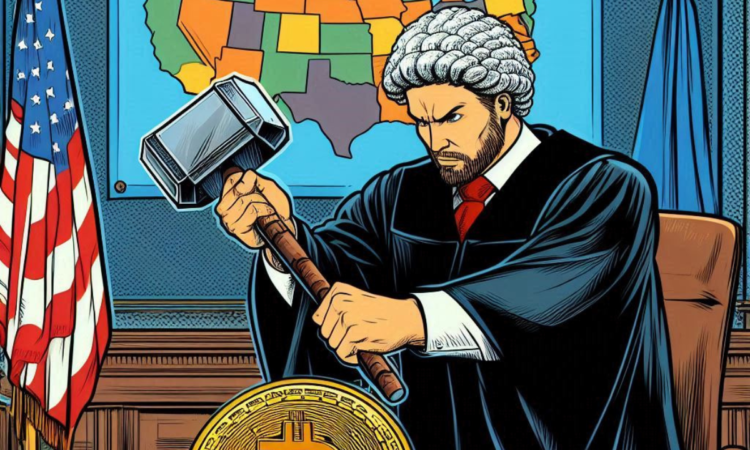
9h42 ▪
4
min of reading ▪ by
The delay of the United States in regulating the crypto industry is no longer a secret. The unfavorable policy towards digital assets adopted by Joe Biden hinders their development. However, a recent Supreme Court decision could overturn this state of affairs by challenging the authority of federal agencies. Indeed, this decision marks a turning point for the industry, redefining regulatory power and offering a new perspective for crypto companies.

The Supreme Court Changes the Game for Crypto
While waiting for the return of pro-Bitcoin (BTC) Donald Trump to the White House, things are evolving. Indeed, the Supreme Court’s Loper Bright vs. Raimondo decision could well be the necessary kick to revitalize the crypto industry.
By declaring the end of Chevron deference, the Court has redefined the distribution of powers between the judicial and executive branches of the U.S. government.
This decision marks an end to nearly four decades during which courts had to defer to federal agencies’ interpretations concerning ambiguous regulations.
“Chevron is overruled,” proclaimed the Court on June 28, thereby opening the door to more frequent judicial challenges against these agencies’ decisions.


SEC and Web3: A Contested Authority
For the world of Web3 and blockchain, this decision is seen as a real upheaval. The Loper Bright case highlighted the trend of the SEC to overstep its bounds as the crypto watchdog.
Joanna Wasick, an attorney at BakerHostetler, pointed out that Loper Bright’s lawyer, Paul Clement, had explicitly used crypto as an example to show how the SEC exceeded its authority.
The Court’s decision could encourage more companies to challenge SEC decisions and could well change the game in cases like Coinbase vs. SEC.
According to Jim Lundy, a former senior legal advisor at the SEC, the Supreme Court made the right choice, as Chevron deference had become too extensive.
International Perspectives on Crypto Regulation
In Europe, where the MiCA (Markets in Crypto-Assets Regulation) framework has recently been established, the Loper Bright decision is being closely watched.
Annabelle Rau, an attorney based in Germany, explained that this decision could reduce regulatory barriers by limiting the interpretive powers of an increasingly contested SEC by the CFTC., thus stimulating innovation in the tokenization of digital assets.
However, a positive regulatory framework also depends on the uniformity of rules interpreted by the courts.
MiCA, although unfavorable to stablecoins, aims to offer clear regulation, balancing innovation and supervision, a goal that the United States could now strive to achieve with this new jurisprudence.
The Supreme Court decision opens new and promising perspectives for the crypto industry, offering a unique opportunity to reassess and strengthen regulation. Crypto companies can now hope for a more stable and predictable framework, thereby stimulating innovation and the adoption of blockchain technologies.
Maximize your Cointribune experience with our ‘Read to Earn’ program! Earn points for each article you read and gain access to exclusive rewards. Sign up now and start accruing benefits.
Click here to join ‘Read to Earn’ and turn your passion for crypto into rewards!
La révolution blockchain et crypto est en marche ! Et le jour où les impacts se feront ressentir sur l’économie la plus vulnérable de ce Monde, contre toute espérance, je dirai que j’y étais pour quelque chose
DISCLAIMER
The views, thoughts, and opinions expressed in this article belong solely to the author, and should not be taken as investment advice. Do your own research before taking any investment decisions.






